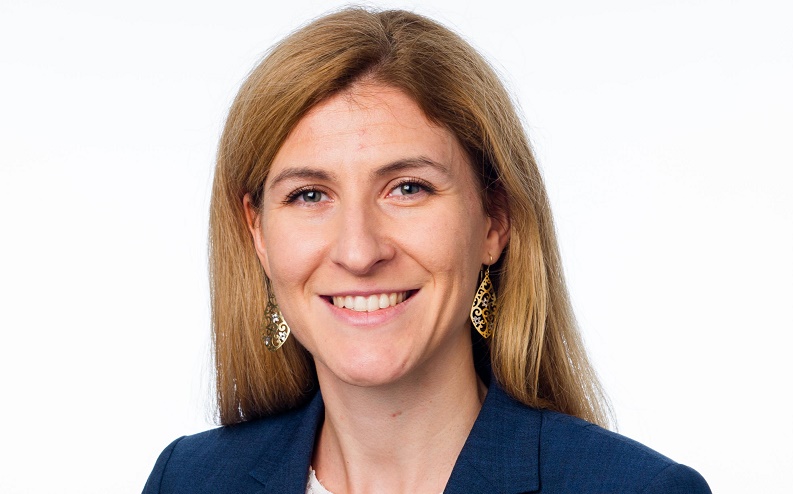The UK consumer price index came in hotter than anticipated in July, recording at 10.1% uplift from a year ago, its highest level since February 1982 when it reached 9.8%.
An increase was always on the cards, but the Bank of England had predicted CPI would not yet break into double digits. After reaching 9.4% in June, the central bank had forecast it would hit 9.8%.
The news comes a week after annual inflation figures in the US petered back to 8.5% in July, after likely peaking at 9.1% in June. Unlike the UK, the US figures were an upside surprise as consensus had been for it to hit 8.7%.
Core inflation in the UK, which strips out energy, alcohol and tobacco, hit 6.2% in July, again exceeding expectations it would reach 5.9%.
“The largest contribution came from food prices—up 2.2% on the month—although there were upwards pressures across all categories,” said Federated Hermes senior economist Silvia Dall’Angelo (pictured). “Core inflation increased to 6.2% in July, from 5.8%, with both services and core goods sub-components moving higher, pointing to a further broadening of inflationary pressures.”
She expects the inflation picture “to deteriorate further in the second half of the year, before it starts improving next year”.
Dall’Angelo added: “Today’s inflation upside surprise, coming on the heels of a strong labour market report yesterday is likely to prompt another 50bp rate hike by the Bank of England at its next policy meeting in September.”
The BoE has revised its forecast and now predicts inflation will reach 13% before the end of 2022.
Giles Coghlan, chief analyst at broker firm HYCM, added: “With many becoming increasingly concerned about growing stagflation fears, this has prompted the BoE to bring its recession projections forward in recent months, with a five-quarter recession now predicted this year.
“Undoubtedly the newest CPI reading means that we may see further GBP weakness in the medium-term, as it signals clear stagflation for the UK.”
See also: Stagflation fears at highest levels since the global financial crisis
Investment Trusts to tackle inflation
When it comes to how investors can combat rising inflation, Hargreaves Lansdown senior investment analyst Joseph Hill offers three investment trust options.
City of London Investment Trust
Hill said: “Long-serving manager (since 1991) Job Curtis invests in good quality, well-managed companies, which can be bought at reasonable share prices. He likes larger, more stable companies that often have multinational operations that are robust enough to weather economic storms and still pay dividends. Curtis also takes advantage of the trust’s ability to invest up to 20% of its assets overseas.
“Curtis is part of a large and experienced team of income investors at Janus Henderson and is focused on providing long-term growth in income and capital.
“In the trust’s last financial year to the end of June 2021, it used revenue reserves built up in previous years to contribute to the dividend, which rose 0.5%. This helped to extend the trust’s record as the investment company that has consistently increased its dividend for the longest period – now standing at 56 years.
“At the time of writing, the trust trades on a 1.99% premium to NAV and yields 4.71%. Income is not guaranteed, and yields aren’t a reliable indicator of future income.”
Merchants Trust
“Manager Simon Gergel invests mainly in larger companies listed in the UK with the aim of providing a high level of income, and a growing income and capital return over the long term,” Hill continued.
“Gergel’s investment process focuses on three key areas. He aims to understand the fundamentals of a company, including its competitive position and financial strength. He assesses valuations compared with both the company’s own history and its peers, and finally considers industrial and consumer themes along with the economic outlook.
“The trust increased its dividend by 0.4% in the year to the end of January 2022, again using reserves accumulated during the good times to boost the income paid to investors. This is the 40th consecutive year that the trust has increased the dividends its paid to investors – the 12th longest record of any investment trust.
“At the time of writing, the trust trades on a 0.40% premium to NAV and yields 4.90%. Income is not guaranteed, and yields aren’t a reliable indicator of future income.”
Murray International Trust
“Abrdn’s Bruce Stout has been lead manager of the trust since 2004. Stout aims to grow income and capital over the long term by investing in company shares from around the globe, as well as holding some bonds. The trust invests more in higher risk emerging markets compared with some peers, with Asia Pacific ex Japan representing the trust’s biggest regional exposure.
“Stout and his team invest in high-quality, financially robust companies that have the potential to grow earnings and dividends over the long term. There’s an emphasis on resilient business models, a unique set of advantages over the competition and experienced management teams.
“The trust increased its dividend by 0.9% in the year to the end of December 2021, again using reserves accumulated during the good times to boost the income paid to investors. This is the 17th consecutive year that the trust has increased the dividends its paid to investors.
“At the time of writing, the trust trades on a 2% discount to NAV and yields 4.34%. Income is not guaranteed, and yields aren’t a reliable indicator of future income,” Hill said.










